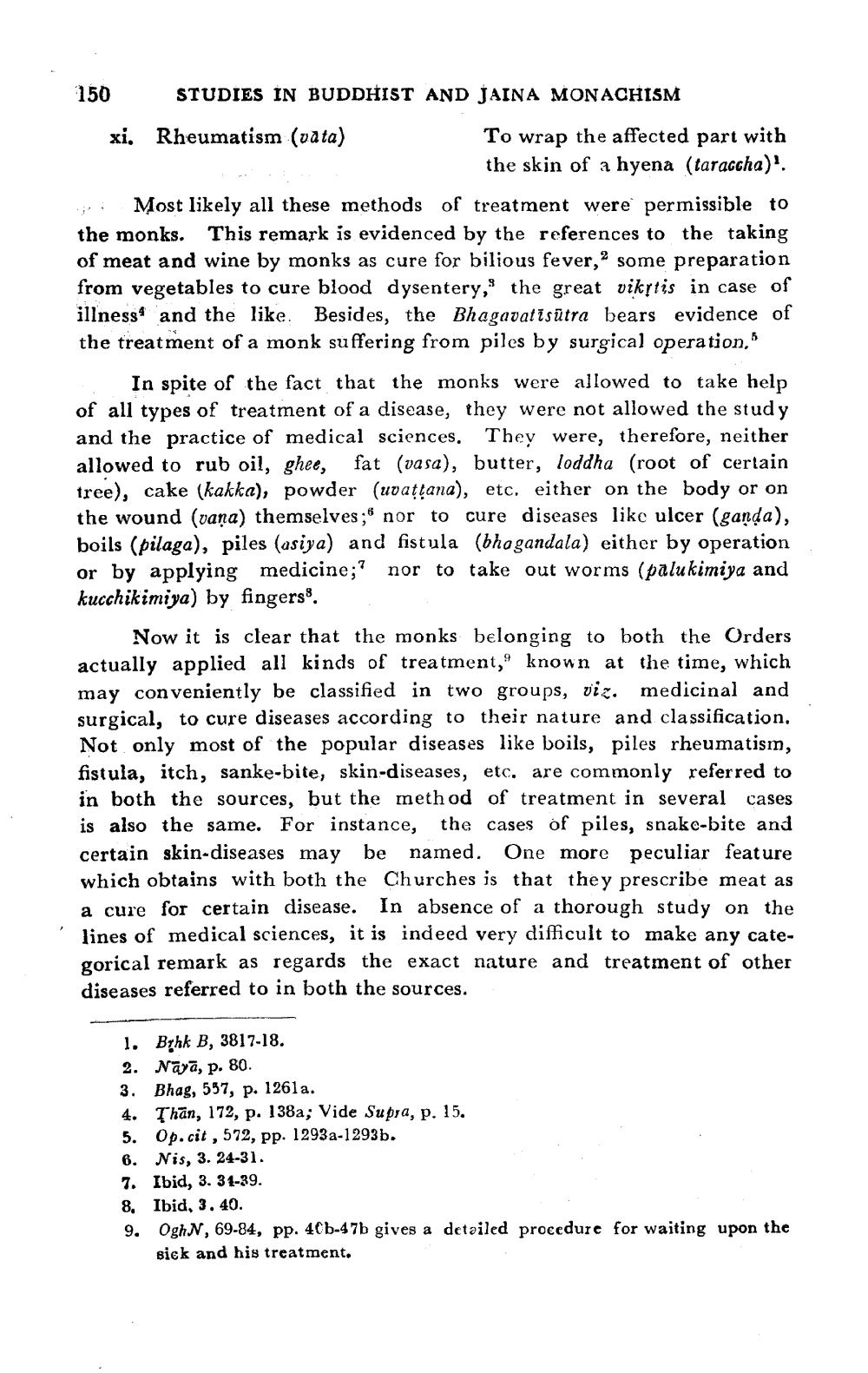________________
150
STUDIES IN BUDDHIST AND JAINA MONACHISM
xi. Rheumatism (vata)
To wrap the affected part with the skin of a hyena (taraccha)'.
Most likely all these methods of treatment were permissible to the monks. This remark is evidenced by the references to the taking of meat and wine by monks as cure for bilious fever, some preparation from vegetables to cure blood dysentery," the great vikytis in case of illness and the like. Besides, the Bhagavatisūtra bears evidence of the treatment of a monk suffering from piles by surgical operation,"
In spite of the fact that the monks were allowed to take help of all types of treatment of a disease, they were not allowed the study and the practice of medical sciences. They were, therefore, neither allowed to rub oil, ghee, fat (vasa), butter, loddha (root of certain tree), cake (kakka), powder (uvaṭṭana), etc. either on the body or on the wound (vana) themselves; nor to cure diseases like ulcer (ganda), boils (pilaga), piles (asiya) and fistula (bhogandala) either by operation or by applying medicine;7 nor to take out worms (palukimiya and kucchikimiya) by fingers.
Now it is clear that the monks belonging to both the Orders actually applied all kinds of treatment, known at the time, which may conveniently be classified in two groups, viz. medicinal and surgical, to cure diseases according to their nature and classification. Not only most of the popular diseases like boils, piles rheumatism, fistula, itch, sanke-bite, skin-diseases, etc. are commonly referred to in both the sources, but the method of treatment in several cases is also the same. For instance, the cases of piles, snake-bite and certain skin-diseases may be named. One more peculiar feature which obtains with both the Churches is that they prescribe meat as a cure for certain disease. In absence of a thorough study on the lines of medical sciences, it is indeed very difficult to make any categorical remark as regards the exact nature and treatment of other diseases referred to in both the sources.
1. Brhk B, 3817-18.
2. Naya, p. 80.
3. Bhag, 557, p. 1261a.
4. Than, 172, p. 138a; Vide Supra, p. 15.
5. Op. cit, 572, pp. 1293a-1293b.
6.
Nis, 3. 24-31.
7. Ibid, 3. 31-39.
8. Ibid, 3.40.
9. OghN, 69-84, pp. 40b-47b gives a detailed procedure for waiting upon the sick and his treatment.




